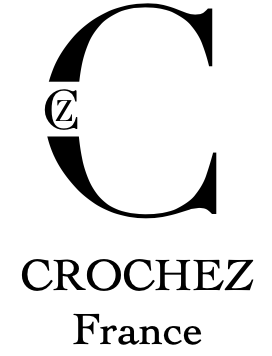The Hat: A History of Use and Elegance
The hat, that timeless fashion accessory, has spanned eras and civilizations, but it is much more than a simple ornament. If we trace the origins of headgear, we discover a complex history, at the intersection of practical needs and social symbols. Once a marker of rank, today an object of style, the hat is an item of clothing that has adapted to all eras, while retaining a certain aura of mystery.
The First Traces: Necessity Above All
The earliest evidence of headgear dates back to Antiquity, where we find depictions of people wearing hats or hoods. It is likely that, from the dawn of humanity, people sought to protect themselves from the cold or the sun with rudimentary items made from animal skins, fur, or plant fibers.
In ancient Egypt, nobles wore elaborate headdresses such as the nemes (pharaonic headdress) or imposing wigs to mark their status. In Greece and Rome, the petasus, a wide-brimmed hat often associated with travelers, was one of the first headgear to have a clearly defined function: protection from the sun.
The Middle Ages: Symbol of Power and Distinction
The Middle Ages saw a diversification of hat shapes and functions. Beyond protection against the elements, headgear became a true marker of social status. Social classes were distinguished by their headdresses: peasants wore simple bonnets or hoods, while nobles and wealthy bourgeoisie adorned themselves with sumptuous hats, often accompanied by feathers or other decorations.
Monks, for their part, wore hoods linked to their religious habits, while knights were distinguished by their helmets or helms. It was during this period that headgear began to acquire strong religious and political symbolism.
Renaissance: When Elegance Takes Precedence
The Renaissance marked a turning point in the history of the hat, with the advent of the beret and the top hat. The beret, of military origin, spread to European royal courts, where it became a chic accessory, worn at an angle to accentuate one's presence. Nobles also adopted hats with wider brims, decorated with feathers and precious stones.
In France, under Louis XIV, the plumed hat became a symbol of nobility. It was no longer simply a practical item, but a way to display power and wealth. Hat-wearing became codified and fashions evolved rapidly, with each monarchy imposing its own style.
The 19th Century: The Golden Age of the Hat
The 19th century is often considered the golden age of the hat. It was during this period that the famous top hat , popularized by English gentlemen, was born, as well as the iconic bowler hat , which embodied the industrial bourgeoisie.
At that time, wearing a hat was not only a mark of social distinction, but also a matter of respectability. People did not go out bareheaded, especially in urban areas. Men wore top hats, boaters, or caps, while women adopted more extravagant headdresses, decorated with veils and ribbons.
Fashions change rapidly, and each decade sees the emergence of new styles. But what remains unchanged is the importance of the hat in everyday attire.
Decline and Renewal
In the 20th century, with the rise of fashion and changing lifestyles, the wearing of hats began to decline. The First and Second World Wars saw a simplification of fashions, and the hat, once mandatory, became an optional accessory.
However, certain periods and movements brought it back into the spotlight. The 1920s, for example, were marked by the wearing of the cloche by women, while the 1950s saw a return to elegant hats by men, with the fedora and the trilby.
Today, the hat has regained a prominent place in the fashion world. Designers are constantly reinventing this iconic accessory, which oscillates between tradition and modernity. Whether you choose a hat for its style, comfort, or simply to stand out, it remains a powerful symbol of elegance and identity.
